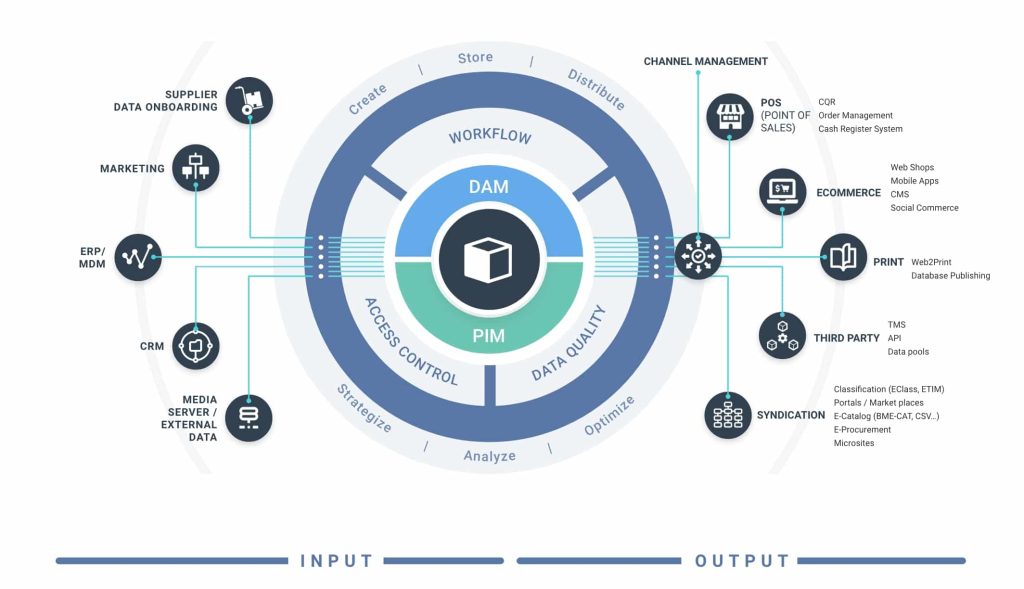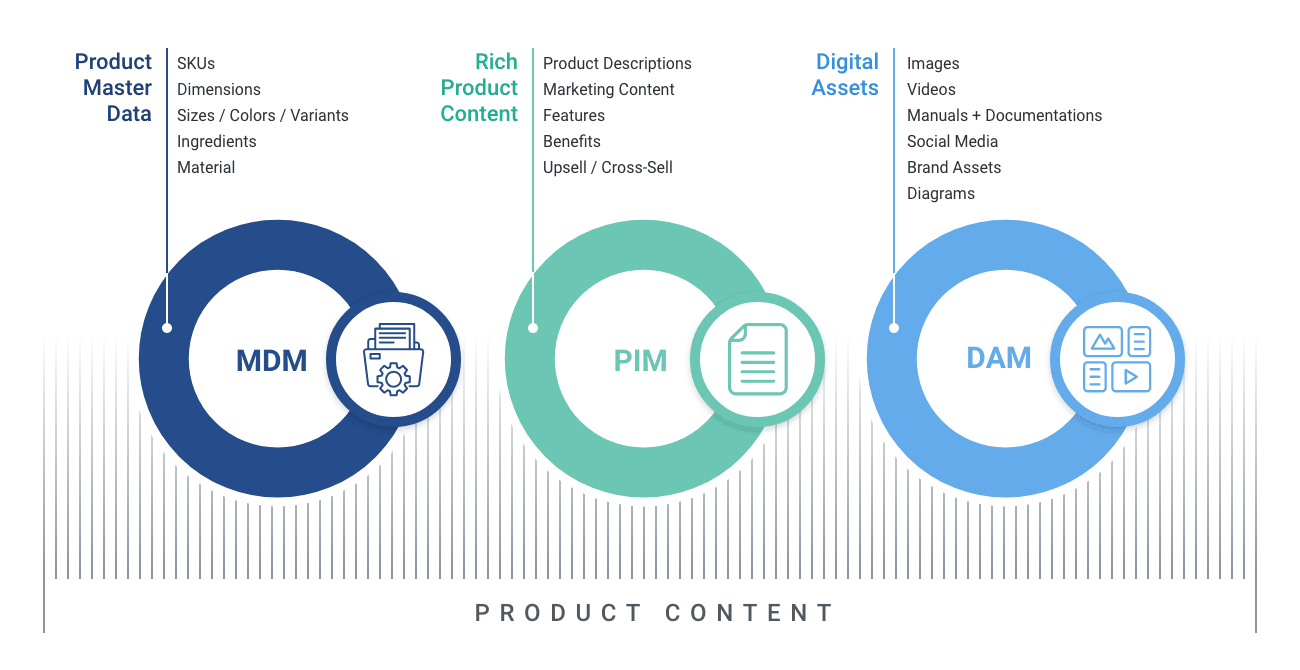Blog
What is Product Content?

Product content refers to the combination of product information with appropriate media content to send a precise product message to a specific target audience via a dedicated channel. The daily challenge for marketers and sales managers is to make their offering and value proposition clear to potential customers, which is why product content shapes the right messages.
Product Data & Digital Assets
It takes both: correct and complete product information and the corresponding images or videos.
Both of these elements have traditionally been handled by two different types of software:
- Product information is managed in Product Information Management systems (PIM systems)
- Media content such as images, videos, audio files, graphics or presentations are managed by Digital Asset Management systems (DAM systems)
While PIM systems can often also store product images and the use of a dedicated DAM system may therefore seem obsolete to some, there are a number of good reasons to combine both systems. As a result, a best-of-breed approach can be applied.
Product Information Management
Product information systems maintain product data in a central instance and eliminate inefficiencies such as duplicates, outdated information, or the management of product data in multiple fragmented sources and Excel sheets. In addition to pure product data, PIM systems also maintain marketing texts for a wide variety of purposes and channels such as online stores, apps, or catalogs, and also support multilingual product data as well as processes related to translation management.
Due to the central importance of product information, the integration of PIM systems into upstream and downstream systems and processes also plays a major role. For example, the PIM often obtains data from ERP systems or from suppliers and ultimately delivers the product information to print catalogs, online stores, or social media. For many industries, compatibility with standardized exchange formats such as BMEcat also plays an important role.

Digital Asset Management
On the other hand, digital asset management systems manage media content such as images, videos, graphics, presentation or audio files. A dedicated DAM system is essential, especially for companies that have many different products in their offering. The creation of this media content is often time-consuming and cost-intensive, and the effective use and reusability of these assets is considered to be todays standard. DAM systems not only provide centralized access to all of a company’s media content, but also facilitate collaboration among marketers, graphic designers, and photographers for optimized workflows around the creation and use of this content.
This includes the integration of content management systems (CMS), online stores, Adobe Create Cloud applications such as InDesign and Photoshop, or even Microsoft Office PowerPoint. As a result, DAM is the central hub for all digital assets within the organization – regardless of where they are created, edited, or ultimately delivered to.
So even though PIM and DAM each have their own specific tasks, they fundamentally have the same goal: their complementary content supports every type of product communication and as a result they are essential tools for marketing and sales.

Product Content – The Best of Both Worlds
However, providing the respective content is only one aspect. The number of opportunities for companies to interact with their potential customers is constantly growing. Whether it’s websites, online stores, catalogs, apps, Instagram, LinkedIn, brochures or online marketplaces – the messages not only have to be correct, appealing and up-to-date, but they also have to be adapted to the respective channel and its specific user group. At the same time, competitive pressure is also growing, as global trade means that companies around the world are competing with each other to win the favor of consumers. In addition to the quality of the product content, time has become the decisive competitive factor: Companies must be faster than the competition and be able to react to changes in the market almost immediately.
Anyone who still has to painstakingly search for the right product information and associated images and link them together has already lost. Only a tightly networked ecosystem of relevant information and assets forms the right basis for targeted, always up-to-date and convincing product communication.
This is the reason why mediacockpit has always combined both disciplines – PIM and DAM – under one roof. Today, companies can no longer view these two areas in isolation. Rather, their focus must be on aligning them, for a product content life cycle that is free of discontinuities and inefficiencies.
Highlighted Whitepaper
Manifest: One-Stop Product Content Experience
Met One-stop Product Content Experience helpen we onze klanten om hun individuele toekomst in de markt op een duurzame en veilige manier vorm te geven.
Accomplish more together
We believe in the value of collaboration and exchange. This applies both to our customer projects, from which we generate many valuable insights for our product development, and to our growing partner network, with an extensive range of which we support our customers in their digitization.



